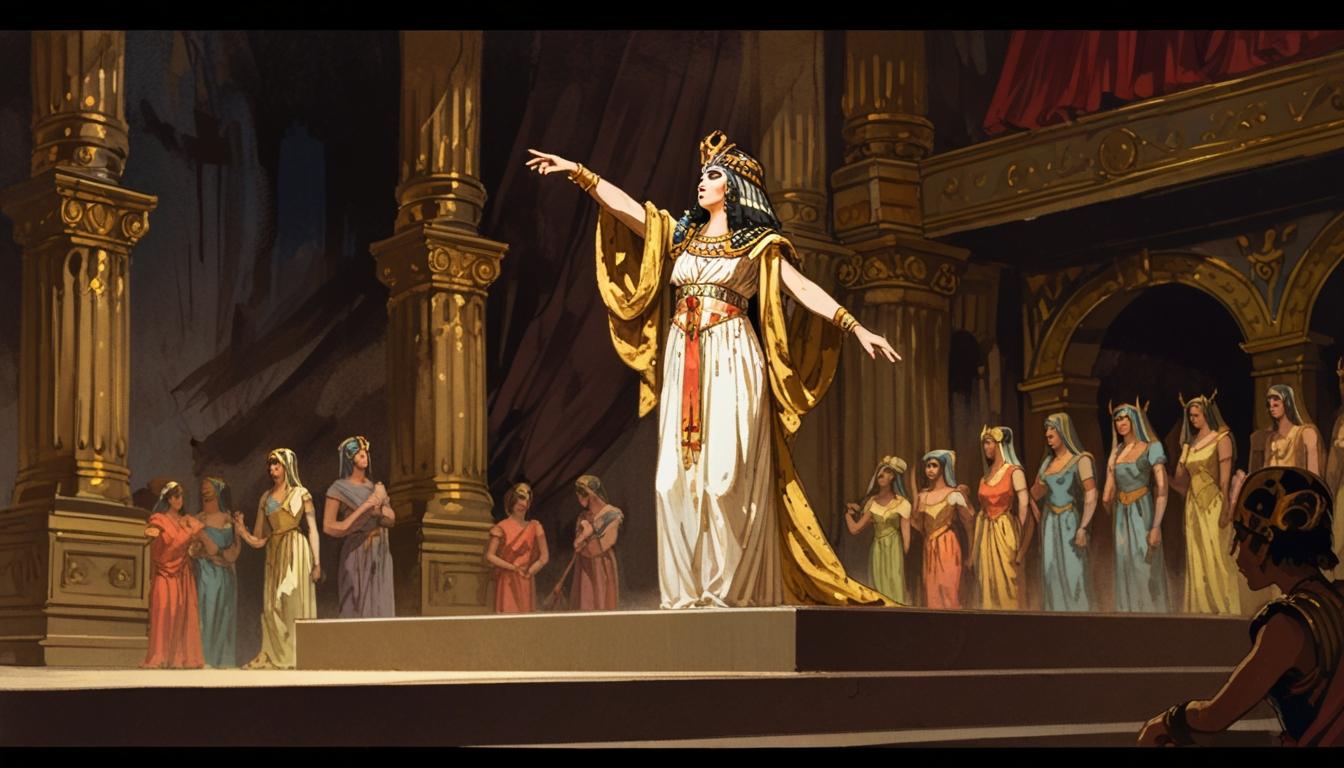In the realm of early music, Handel's Giulio Cesare continues to captivate audiences with its blend of profound emotionality and intricate musicality. The recent concert performance conducted by Harry Bicket at London’s Barbican exemplified the opera's enduring appeal, showcasing both sublime artistry and moments of unintentional levity, resulting in a production that oscillated between the heights of operatic prowess and touches of whimsicality.
One of the most poignant scenes occurred in the final moments of Act 1, where mezzo-sopranos Beth Taylor as Cornelia and Paula Murrihy as Sesto, a trouser role, delivered a hauntingly unaccompanied duet. Their harmonies, encapsulated in sighing parallel thirds, transcended mere performance, embodying the weight of shared grief. This intimate moment provided a striking counterbalance to the vibrant orchestration and dynamic vocal performances characteristic of the production.
At the heart of the opera was countertenor Christophe Dumaux, whose portrayal of Caesar was marked by an exquisite command of vocal ornamentation. His delivery of poignant lines signaled not just a mastery of technique but a heartfelt engagement with the character’s romantic turmoil, particularly during the aria where he declares his love for Lydia, Cleopatra in disguise. Audiences were spellbound as Dumaux navigated intricate melodic lines with ease, showcasing a remarkable capacity for emotional nuance, especially in a moment where he sustained a single note, crafting a crescendo that resonated deeply.
John Holiday’s performance as Ptolemy added another layer of intrigue, with flexible ornamentation that echoed the character's volatile nature. Meanwhile, the English Concert's orchestra under Bicket’s direction maintained a robust yet refined sound, shifting seamlessly from warmth to frenetic energy, reflecting the opera’s dramatic contrasts. However, the production's minimalistic elements—such as the sole use of a plastic knife, an urn, and a humorous Waitrose bag prepared by baritone Morgan Pearse as Achilles—sometimes rendered moments overly theatrical, blurring the lines between comedy and tragedy.
Contrasts were further highlighted by the dazzling performance of Louise Alder as Cleopatra, whose presence commanded the stage. Her first aria was a mélange of bravado and technical accomplishment, transitioning to moments of touching sincerity that showcased her deep understanding of the character's complexities. Many operatic critiques have lauded Alder's ability to encapsulate the journey of Cleopatra’s character, projecting both her allure and her vulnerability, a quality that resonates with audiences across various productions globally.
Interestingly, other recent productions of Giulio Cesare, such as those at Teatro Alighieri and Teatro Municipale di Piacenza, have also spotlighted outstanding performances, particularly by soprano Marie Lys as Cleopatra. Lys’s interpretations were similarly marked with emotional depth, especially evident in poignant arias like "Piangerò la sorte mia." These performances underscore a burgeoning trend where productions not only spotlight vocal prowess but also place an emphasis on authentic emotional expression.
Furthermore, various interpretations of this iconic opera at notable venues like Glyndebourne have embraced innovative staging and choreography that illuminate the narrative, broadening the audience’s engagement with this centuries-old work. Directed by the likes of Chiara Muti at both Ravenna and Piacenza, these productions merge contemporary artistic vision with the operatic tradition, highlighting the timelessness of Handel's score.
Despite the occasional absurdity seen in the Barbican performance, the overall musical integrity and emotional richness prevailed, reaffirming Giulio Cesare's status as a cornerstone of Baroque operatic repertoire. As audiences continue to respond to the indelible themes of love, betrayal and ambition, it becomes evident that these multifaceted interpretations will ensure that Handel's enduring masterpiece remains relevant and resonant for generations to come.
Reference Map
- Paragraphs 1, 3, 5
- Paragraphs 3, 5
- Paragraphs 6
- Paragraphs 4
- Paragraphs 1, 2
- Paragraphs 2, 5
- Paragraphs 3, 5
Source: Noah Wire Services
